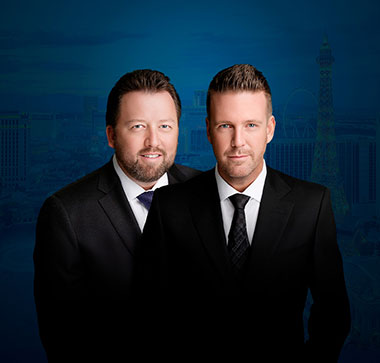Any type of accident has the potential to kill or maim someone. When you combine 2,000-pound vehicles with high speeds, the results can be catastrophic. Thankfully, advances in automotive design and technology have helped reduce the number of fatalities on the road. However, there is one part of the vehicle that is still particularly vulnerable—the side.
Broadside collisions, also known as T-bone collisions or side-impact collisions, happen when one vehicle collides head-on with the side of another vehicle. While the front and back of a vehicle have crumple zones and extra space to absorb the energy of the crash, the side of the vehicle has little more than the door to protect the occupants. These accidents are particularly dangerous when the point of impact is on the occupant side. If you or a loved one have been injured in a broadside collision, contact a car accident lawyer for more information about your rights.
Broadside Collisions—Locations by the Numbers
When it comes to accidents, drivers need to understand how they happen, but also where they happen. This is especially important when it comes to broadside collisions. In this case, the where is almost more important than the how or the why. This is because side-impact collisions almost always happen at the same place—intersections.
For a broadside collision to occur, two vehicles must be driving in directions perpendicular to one another, as is the case at an intersection. Crashes at intersections are a serious problem in Nevada. Between 2012 and 2016 there were 301 traffic fatalities at Nevada’s intersections. Another 2,212 were seriously injured. According to the Nevada Department of Transportation, an overwhelming majority of these accidents were broadside collisions. Even more frightening—75 percent of these fatalities happened in Clark County. But why are intersections so dangerous? Aren’t traffic control devices supposed to prevent this type of accident? Let’s take a closer look at why these accidents happen at intersections:
- Drivers running a red light: According to the Nevada Department of Transportation, one in five drivers admit to running one out of the last ten lights they have passed. This is an alarmingly high rate. When a driver runs a red light and causes a collision at an intersection, the force of the accident can cause the vehicles to ricochet into nearby vehicles, causing further damage.
- Unprotected left turns: Left turns on a green light or a flashing yellow can be dangerous. The driver making the turn has to make sure they have enough time to complete the turn. If the driver does not leave enough room or the oncoming driver is speeding, a broadside collision may occur.
- Failure to yield the right of way at a stop sign: Intersections at stop signs require drivers to yield the right of way. Generally, whichever driver is at the intersection first has the right of way. If more than one vehicle arrives at the same time, the driver on the right goes first. Accidents happen when drivers ignore the law or become confused about who is going to go first.
Common Injuries After a Broadside Collision
According to the Insurance Information Institute, angle collisions kill more people than any other type of accident. In 2016, 6,122 people died in broadside collisions. That’s nearly 18 percent of all traffic fatalities. Thankfully, not all collisions end with a fatality. But those that don’t often result in serious injuries. Common injuries after a broadside collision include:
- Traumatic brain injuries: Traumatic brain injuries occur as a result of a strong force to the head or a penetrating object. During a broadside collision, the force of the accident can cause your head to hit the steering wheel, headrest, or windows. Common symptoms include dizziness, headaches, nausea, confusion, and loss of consciousness.
- Spinal cord injuries: According to the Mayo Clinic, motor vehicle accidents and motorcycle accidents are the number one cause of spinal cord injuries, making up almost 50 percent of all new spinal cord injuries every year. Like traumatic brain injuries, spinal cord injuries happen as the result of a traumatic injury or a penetrating wound. Symptoms may not present until several days after the injury. If you experience numbness, tingling, extreme pain, or loss of bowel or bladder control, you need to seek emergency medical care right away.
- Broken bones: Our bones allow some amount of flexibility, but they can only withstand so much force. The trauma of a collision can cause the bones to break. Common symptoms of a broken bone include extreme pain, swelling, or bone protruding through the skin.
Preventing Broadside Collisions
As a driver, you already have a jump start on preventing broadside collisions. Realizing where these accidents occur can help you understand the dangers that surround you. But just knowing where these accidents happen is not enough. Taking a few extra steps can save your life:
- Look twice before crossing: As drivers, we assume that other drivers are going to obey the law. So when the light turns green, most drivers don’t even think twice before proceeding through the intersection. This is dangerous. Always scan the intersection before moving through it, even if you have the right of way, and even if you have a green light.
- Be alert: Not all side-impact collisions happen at intersections. Accidents can also happen when a driver attempts to leave a driveway and turn across traffic. Watch for other vehicles and be prepared to react.
- Be patient: Left turns across traffic are another cause of broadside collisions. These accidents happen when the driver thinks they have enough time to make the turn in front of oncoming traffic. When making a left turn, be patient and allow yourself ample room to complete the turn.
Making a Personal Injury Claim After an Accident
Broadside collisions can lead to serious injuries. If you have been injured because of someone else’s negligence, you deserve to be compensated for your injuries. A personal injury claim can help you cover the costs associated with the accident. Common costs include:
- Medical bills
- Lost wages (including future wages)
- Lost earning capacity
- Pain and suffering
- Loss of enjoyment
- Loss of consortium
- Wrongful death
Protect Yourself After an Accident

Motor vehicle accidents inflict a heavy toll on victims and their families. After an accident, protect yourself and your legal rights. Nevada law allows victims of an accident to pursue financial compensation after an accident. While a personal injury claim won’t take the pain away, it can make it easier to get the care you need. If you or a loved one has been injured in an accident, contact a Nevada car accident attorney to learn more about your rights.

